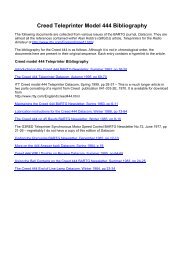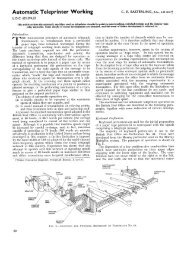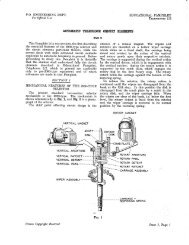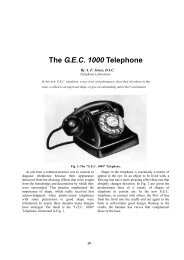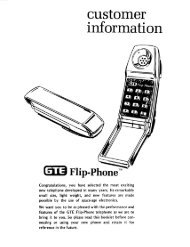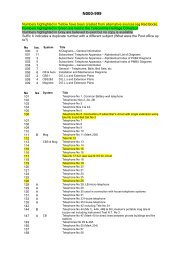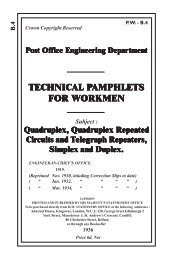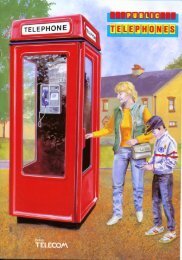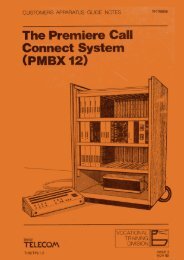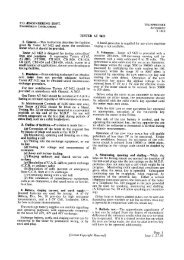TRAFFIC CONTROL TELEPHONE SYSTEMS Circuit - Sam Hallas
TRAFFIC CONTROL TELEPHONE SYSTEMS Circuit - Sam Hallas
TRAFFIC CONTROL TELEPHONE SYSTEMS Circuit - Sam Hallas
You also want an ePaper? Increase the reach of your titles
YUMPU automatically turns print PDFs into web optimized ePapers that Google loves.
The speak key also connects the controller's telephone circuit to the line through<br />
contacts of the speak key, T1 and T2 terminals, capacitors QG and QH to lines 1 and<br />
2.<br />
On completion of the conversation, the speak key is restored, relays BC and<br />
BCA release, and the circuit for all busy lamps is broken at BCA 1.<br />
Outgoing Calls<br />
The Controller operates the speak key of the circuit required which operates<br />
BC relay. BC operating removes the "Call" relay TC from the line by opening BC2<br />
and BC4. BC1 connects a 3,000 ohm resistor YP + YQ across the line which is<br />
intended to load the line during signalling and so prevent excessive peaks in the waveform<br />
which would tend to occur in the case of short lines with a relatively small<br />
number of way stations. The loss of signalling or speech efficiency due to this<br />
artificial loading is found to be negligible. BC3 operates relay BCA which lights all<br />
busy lamps.<br />
The Controller then operates the dial key DK which operates IR relay via 50<br />
volts positive, impulsing springs of dial, dial key, speak key, IR windings in series to<br />
50 volts negative. The guard relay G operates via 50 volts negative, resistor YE, DC2,<br />
winding of G, IR1 to 50 volts positive thus breaking the self interrupting homing<br />
circuit for the line switches SA and SB at G4 and completing the circuit for the digit<br />
counting relay DC via 50 volts negative, winding e-d of DC, DS3, SA2, G2, GC3,<br />
TS2 to 50 volts positive.<br />
Relay DC breaks the circuit for Relay G via resistor YE200, at DC2, but relay<br />
G does not release, being held operated via 50 volts positive, IR1 winding of relay G,<br />
DC2, relay DC 3 ohm winding a-b with resistor YA 50 ohm in parallel, DS2, line<br />
switch SA operating coil b-e, to 50 volt negative.<br />
Assuming that the Controller dials the first digit of the code 53, Relay IR will<br />
release on the first impulse (break of dial) from the dial, and line switch SA operating<br />
coil will be energised via 50 volt negative, SA operating coil, DS2, Relay DC 3 ohm<br />
winding b-a with resistor YA 50 ohms in parallel, DC2, IR1 (make before break<br />
contact); G3 to 50 volt positive. The operation of IR1 momentarily short circuits<br />
Relay G, but this short circuit makes it slow releasing and it remains operated during<br />
impulsing.<br />
Relay IR is operated again when the dial remakes the impulsing contact after the<br />
first impulse. This removes the short circuit from relay G at IR1 and connects the<br />
winding of Relay G in series with line switch SA operating coil, causing the latter to<br />
release and step the line switch wiper arms SA1, 2, 3 and 4, one step. At line switch<br />
Page 41



